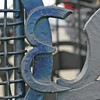
 This month's Altered Art swap on UK Stampers had the theme of dominoes. We each altered a domino, then incorporated it into a piece of work of our choice. I like this approach, as everyone has a different way of treating their domino. The pieces were all so different and gorgeous. See the slideshow here. My piece is a stamp book holder, and I have done a mini-tutorial for it (scroll down the page to see it). I call it mini because I didn't have time or a second pair of hands to be able to take any photos. First, the how-to of the decoration :)
This month's Altered Art swap on UK Stampers had the theme of dominoes. We each altered a domino, then incorporated it into a piece of work of our choice. I like this approach, as everyone has a different way of treating their domino. The pieces were all so different and gorgeous. See the slideshow here. My piece is a stamp book holder, and I have done a mini-tutorial for it (scroll down the page to see it). I call it mini because I didn't have time or a second pair of hands to be able to take any photos. First, the how-to of the decoration :)Colour: Watercolour crayons/water-spray/drinking straw technique shown by Jo Capper-Sandon in Craft Stamper, Versafine, Versamagic, Distress Ink
Stamps: Stampin' Up, Crafty Individuals (postmark)
Other: Mountboard, old book pages, stamps (from a package sent to me by Marina from Cherry Pie), domino (the stamps are collaged on with beeswax using my Melt Pot).
My piece uses such simple techniques to construct it that I wanted to share them. I first came across the mitre trick when Tricia Morris showed it on Craft TV Weekly, which is sadly no more. I have used this technique before, to make a box file, and for the covers of my two circle journals. The trick is to treat your object as if it were a book, with two covers and a spine. I am giving the dimensions I used for this piece, but any variation will work.
What you will need:
Mountboard or greyboard
Cover paper and liner paper
Wet glue- I use white PVA
Something to spread the glue evenly- a foam brush or credit card is ideal
Ruler and pencil
Bonefolder
1. First of all, you need to decide your size and cut your mountboard pieces. My main pieces were: front 5cm x 8.5cm, base 3cm x 8.5cm, back 7cm x 8.5cm. I did not cut my sides or base at this point, as I wanted a really snug fit.
2. Work out the dimensions for your cover paper. Widthways is easy, as it needs to be 2cm bigger on each side than the mountboard. Lengthways, you will need to allow an extra 0.5cm each side of the spine for the piece to fold, plus 2cm each end. So my finished cover paper was 12.5cm wide x 20cm long. Decorate it, remembering that it is a wrap-around and the design needs to be multi-directional.
3. Mark your 2cm border on the back of the paper. Spread glue evenly on the mountboard pieces and glue down, making sure that they all line up at the top and bottom, and that you leave your 0.5cm gutters either side of the small spine piece.
4. Using your ruler as a spacer, draw a line across each corner of the cover paper, approx. 3mm from the corner of the cover, and at approx 45 degrees (you can do it by eye, it's OK to guess!) Cut along these lines.
5. Now we are going to fold in the long edges of our cover paper. First fold your flaps up without glue, to make a crease (just to make it easier to fold when covered in wet, sticky glue). Spread your glue along the first flap, making sure you get it right up to the edge of the mountboard. Lift up the whole piece, and press the edge against your work surface as you wrap your flap as tightly as possible around the mountboard (if you just use your fingers it won't be as even). You will know this is right if you can still see the shape of the mountboard- the paper shouldn't look domed. Repeat for the other side. Work the joints, smoothing the cover paper gently down into the gutters.
6. This next part is slightly fiddly. When you look at the corners of your piece, you will see that the cover paper overhangs the mountboard by 0.3cm on the long side. You need to use your bonefolder to tuck this excess around the corner and flatten it out. Do this on all four corners. Now you have a nice flat flap to fold up and glue, exactly like you did for the long sides, and when it is glued you will have a professional-looking mitre with no unsightly points.
7. Cut your liner paper 0.5cm smaller all round than your finished piece is (mine was 11.5cm x 19cm). Brush on your glue and, starting from the spine, smooth the liner down onto your piece, gently pushing the paper down into the gutters again. Now work the joins, and smooth it down anywhere it pops up, adding extra glue if necessary. Your covers are done!
8. To add sides and a base, simply measure your finished piece and cut your mountboard to fit. My sides have a slanted top edge, and my base is bigger by 0.5cm all round. Be aware that your cover paper will add bulk, so err on the smaller side when cutting. Add glue on three edges of the side pieces, and hold in position until the glue starts to set- with PVA this doesn't take long. Glue the base on, and leave the whole piece to dry overnight, using weights, clips or elastic bands if necessary to make a tight joint.
I hope this makes sense to you! If do you have any queries, please feel free to email me and ask- my email is on my profile. And if you make something using these instructions, link back to this post and I will come and admire your work!














12 comments:
You are so clever - thank you so much for the tutorial - I am sure that I will have a go in the future.
I just love the colours and textures - it is beautiful
I love the different elements you have used on this, the old book pages and stamps. It looks fab!
What a wonderful piece - whoever got that in the swap must have been delighted! Will come back and read the tutorial when I'm not half asleep!
brilliant tute,thank you! and the finished piece looks great. who was the lucky recipient?
Fabulous, and thanks for the mini tutorial Hazel x
blimey what a super piece and lucky person who recieves this...v clever and fab colours Hazel!
Love this piece Hazel, and I notice I am mentioned on the side of the holder in the second shot (just under Polly. LOL). Great work.
This is gorgeous Hazel !!
isaxx
Gorgeous! And I love mum's birthday card. You have some lovely crafting on here. x
Beautiful work :-)
Stunning Hazel xxxx
ooooooooooo yesssssssss verrry clever indeed. Wonderful work, and great tutorial.
Post a Comment